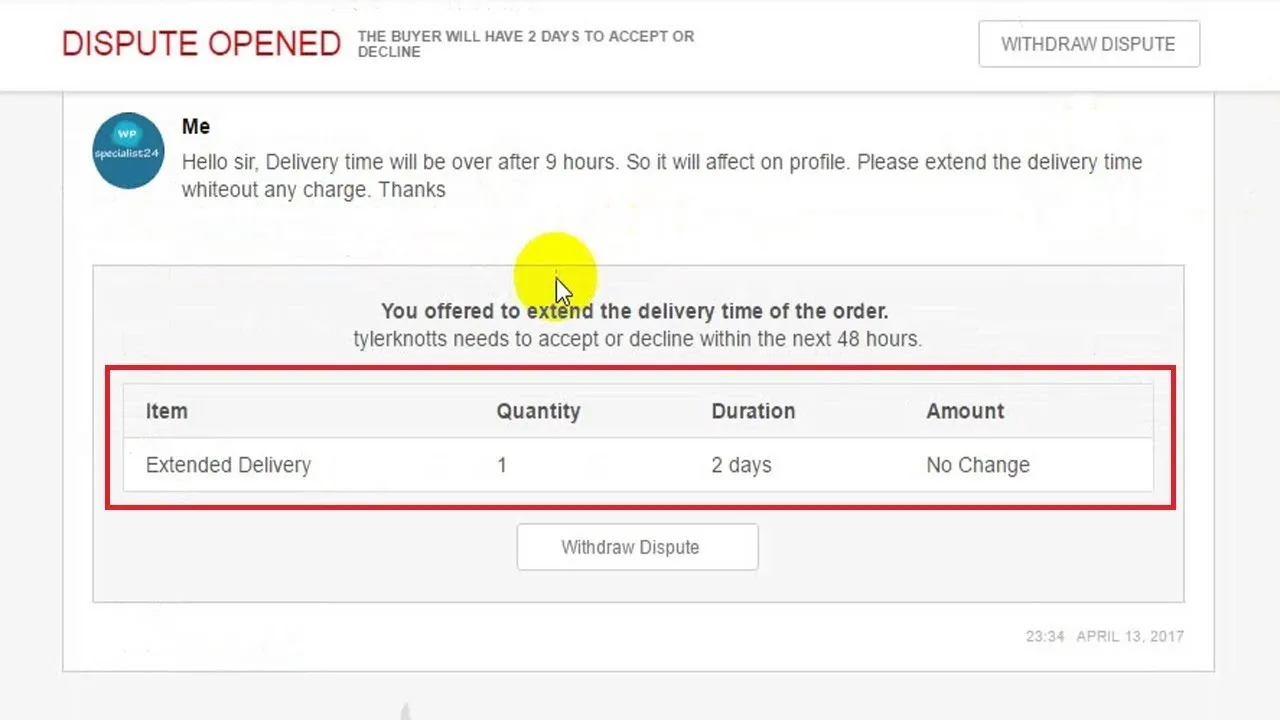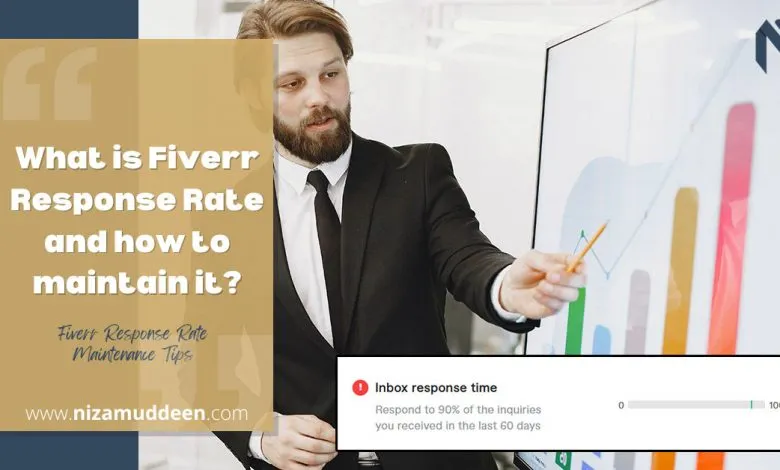When you're diving into the world of freelancing on Fiverr, one of the questions that often pops up is about the relationship between delivery times and the hourly rates shown by sellers. It's easy to assume that if a gig has a specific hourly rate, the work will be delivered in a quick timeframe. But how accurate is this assumption? Let's unravel the pricing structure of Fiverr and how it relates to delivery times.
Understanding Fiverr's Pricing Structure

Fiverr operates on a unique pricing model that can sometimes be a bit confusing for newcomers. It’s essential to grasp how this system works, especially if you’re contemplating a project with a specific delivery timeframe in mind.
Here are key components of Fiverr’s pricing structure:
- Base Price: Each gig has a set base price, which you’ll see listed prominently. This is the minimum amount a seller charges for the service.
- Gig Extras: Many sellers offer add-ons or "extras." These extras can enhance your order—like faster delivery or additional features—but they come at a premium cost. Always check these options!
- Delivery Time: The estimated delivery time is specified by the seller and isn’t always linked to their hourly rate. For example, a seller might charge $50 for a service that takes two days, regardless of their hourly rate perception.
- Seller Skill Level: Fiverr categorizes sellers into different tiers (New Seller, Level One, Level Two, and Top Rated). Generally, more experienced sellers might charge higher rates but may also deliver quality work faster.
So, to sum it up, while there is a connection between hourly rates and delivery times, it’s not a straightforward relationship. Different factors come into play, and understanding these can help you make informed decisions when ordering on Fiverr.
Also Read This: How to Get Found on Fiverr
How Delivery Times are Calculated

When you dive into the world of Fiverr, one of the first things you'll notice is the emphasis on delivery times. But how exactly are these times calculated? It's not just a random guess—there’s a method behind the madness! Let's break it down:
- Project Complexity: Naturally, more complex projects require more time. If a gig involves extensive research or intricate design work, the seller will need to allocate additional time to complete it.
- Seller's Availability: Each seller has their own capacity. If they are busy with multiple projects, the delivery time will reflect their availability and workload.
- Service Level: Fiverr allows sellers to offer different tiers of service—such as basic, standard, and premium. Typically, the more expensive the package, the quicker the delivery time, reflecting the urgency and resources available to fulfill the order.
- Communication: Interaction between the buyer and seller can also affect delivery times. If there are numerous revisions or clarifications needed, it might extend the timeline.
In essence, delivery times are tailored based on the specific project requirements, seller workload, and the nature of communication. A well-thought-out approach ensures both parties understand what to expect and helps maintain a smooth workflow.
Also Read This: Does Fiverr Require a SSN? Understanding the Requirements for Freelancers
The Relationship Between Hourly Rates and Delivery Times

Now, let's chat about the connection between hourly rates and delivery times. It’s a topic that often raises eyebrows. At first glance, it might seem that a higher hourly rate guarantees faster delivery, but it’s a bit more nuanced than that. Here’s what you should know:
- Quality vs. Speed: If a seller charges a higher hourly rate, it often means they have more experience and can deliver a higher quality of work, but that doesn’t always translate to faster times. They may take their time to ensure top-notch delivery.
- Value of Expertise: Higher rates can also mean specialized expertise. A niche expert might take longer to deliver their services because they’re customizing their approach, even if their rate is more than a generalist.
- Project Scope: Regardless of hourly rate, the scope of a project can dictate delivery time. A more involved project, even with a high-rate seller, may take longer due to the depth of work required.
- Expectation Management: Transparency is key! Sellers often set delivery times based on their working style and project demands, so higher rates don’t automatically imply shorter timelines.
So, while hourly rates can hint at the quality and expertise you might expect, they don’t dictate delivery speed. It’s crucial to read through gig descriptions, communicate with sellers, and understand that quality work often takes time, regardless of the rate displayed.
Also Read This: Do Sellers See Payment Information on Fiverr?
5. Factors Affecting Delivery Times

When it comes to delivery times on Fiverr, it's important to understand that several factors can come into play. While the hourly rate shown provides some insight into a seller's pricing, it doesn't necessarily correlate directly with how quickly you can expect to receive your order. Here are a few key elements that can influence delivery times:
- Seller’s Workload: If a seller is juggling multiple projects simultaneously, it may impact their ability to deliver your order within the expected timeframe. Always check the seller's current order load, which is often indicated on their profile.
- Complexity of Your Project: The more intricate your requirements, the longer it may take to deliver a polished result. For example, a logo design might take less time than a complete branding package.
- Seller’s Experience: More experienced sellers might have streamlined processes, allowing them to deliver quicker. Newer or less experienced sellers may take time to develop their skills and refine their work.
- Communication and Clarifications: If your project involves back-and-forth communication for clarifications or changes, this can extend the timeline. It’s always best to be as clear as possible upfront.
- Working Hours: Time zone differences can affect how quickly you receive responses or updates. Some sellers may only work part-time, which could slow down the delivery process.
Considering these factors can help set realistic expectations for your Fiverr orders.
Also Read This: Should I Tip on Fiverr?
6. Tips for Buyers: Getting the Most Out of Fiverr Deliveries
Fiverr is a fantastic platform for accessing a wide range of services, but to maximize your experience, it's essential to follow some tips that can improve the overall process and ensure timely deliveries. Here are some recommendations:
- Do Your Research: Before placing an order, spend time browsing seller profiles, reading reviews, and checking portfolios. This can give you a better sense of who can meet your needs and deliver on time.
- Be Clear with Your Instructions: Providing detailed, specific instructions can significantly reduce the need for revisions and speed up the delivery process. Use bullet points or examples if necessary!
- Set Realistic Deadlines: Remember, rushing a project may affect the quality of the work. If you need something urgently, consider using Fiverr’s "Express Delivery" option where available.
- Communicate Effectively: Keep the lines of communication open. If you have questions or need updates, don’t hesitate to reach out to the seller. Being proactive can help avoid misunderstandings.
- Leave Feedback: Once you've received your order, provide feedback not only to help other buyers but also to assist the seller in refining their services.
By following these tips, you can enhance your experience on Fiverr, paving the way for successful collaborations and timely deliveries!
Are Delivery Times on Fiverr the Hourly Rate Shown?
Fiverr is a popular freelance platform where professionals offer a variety of services, including graphic design, writing, programming, and more. One of the key elements that buyers consider when hiring a freelancer is the delivery time associated with a service. However, there seems to be confusion about whether the delivery times listed on Fiverr correlate with the hourly rates displayed by freelancers. Let’s delve deeper into this topic.
Delivery times on Fiverr typically refer to how quickly a seller can deliver a project once commissioned, while the hourly rate indicates what the seller charges for their work. These two metrics can be interrelated but are not always directly tied together. Here are some important considerations:
- Service Type: The complexity and nature of the service can influence both the delivery time and the pricing. More complex tasks may command higher rates and longer delivery times.
- Seller’s Experience: Experienced freelancers may charge higher hourly rates but may also deliver faster, depending on their efficiency and skills.
- Package Options: Sellers often offer different packages (basic, standard, premium) with varying delivery times and pricing structures. Understanding these can help clarify potential costs.
- Communication: Clear communication between buyers and sellers is crucial as it helps set realistic expectations on delivery times and costs.
To summarize, while the hourly rate and delivery time displayed on Fiverr are important factors, they do not directly equate to one another. Buyers should thoroughly review each service’s description, pricing, and expected delivery timeline before making a hiring decision.



